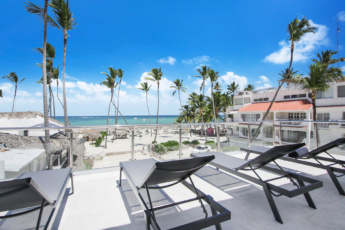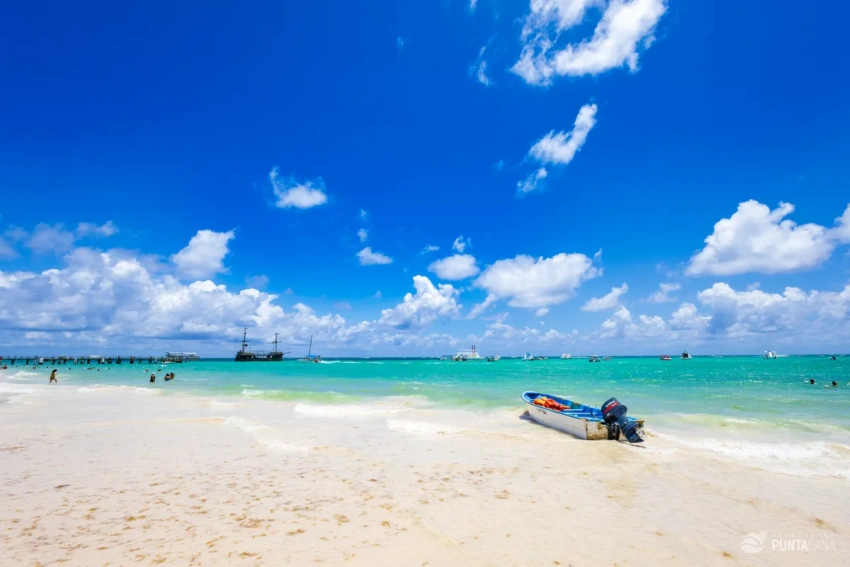Managing Jet Lag: Quick Tips for Adjusting to the Dominican Republic’s Time Zone
Understanding Jet Lag and Its Impact

Managing Jet Lag: Quick Tips for Adjusting to the Dominican Republic’s Time Zone
Jet lag is a common challenge for travelers, particularly for those venturing to destinations like the Dominican Republic. This phenomenon results from the disruption of one’s internal body clock, making it essential to understand its nuances to minimize its impact on your travel experience.
1. What Causes Jet Lag?
Jet lag primarily arises from the disruption of circadian rhythms, which are the natural processes that regulate our sleep-wake cycle. These rhythms are influenced by the Earth’s rotation and the cycle of daylight and darkness. When you travel across multiple time zones, your internal clock falls out of sync with the local time, leading to jet lag.
Time zone changes play a significant role in this disruption. For instance, if you fly from Los Angeles to Punta Cana, you’re crossing three time zones, causing your body to remain adjusted to Pacific Time when you need to adapt to Atlantic Standard Time. This shift can confuse your body, leading to the symptoms commonly associated with jet lag.
2. Symptoms of Jet Lag
Travelers often experience a variety of symptoms when dealing with jet lag, which can vary in intensity based on the individual and the number of time zones crossed. Fatigue is the most prevalent symptom, as your body struggles to adjust its energy levels to the new time zone. This can be accompanied by insomnia, where you find it difficult to fall asleep or stay asleep during the local nighttime hours.
Additionally, digestive issues such as indigestion, constipation, or an upset stomach can occur as your body’s digestive processes try to align with meal times in the new time zone. Mood swings and a lack of concentration are also common, making it crucial to manage these symptoms effectively to enjoy your trip fully.
3. Why the Dominican Republic?
The Dominican Republic, with its lush landscapes and vibrant culture, is a popular destination for travelers from various US regions. However, adjusting to its time zone can present specific challenges, particularly for those traveling from the west coast of the United States. The country operates on Atlantic Standard Time, which means a significant time difference for those coming from places like California or Washington.
For instance, if you are traveling from New York, the time difference is only one hour, which might not pose a severe challenge. However, coming from the west coast involves a three-hour difference, which can exacerbate the symptoms of jet lag. Understanding these challenges can help in planning your travel more effectively, ensuring a smoother transition and a more enjoyable stay in this Caribbean paradise.
Pre-Travel Preparations
Preparing for your journey to the Dominican Republic involves more than just packing your bags. Strategic pre-travel planning can significantly reduce the impact of jet lag, ensuring you arrive refreshed and ready to enjoy your vacation.

Aerial view of Punta Cana
1. Gradually Adjust Your Sleep Schedule
One of the most effective strategies to combat jet lag is to gradually adjust your sleep schedule to match the time zone of the Dominican Republic. Start by shifting your bedtime and wake-up time by 15 to 30 minutes earlier or later each day, depending on whether you are traveling east or west. This gradual adjustment allows your body clock to align more closely with your destination’s time, minimizing the shock of a sudden change.
Consider using a sleep app to track your progress and ensure you are making the necessary adjustments. These apps often provide insights into your sleep patterns and suggest optimal sleep and wake times based on your travel plans.
2. Plan Your Flight Wisely
Selecting the right flight can play a crucial role in managing jet lag. Opt for flights that allow you to arrive in the Dominican Republic during the daylight hours. This gives you ample opportunity to expose yourself to natural light, which is vital for resetting your internal clock.
Additionally, choosing flights that align with your natural sleep cycle can be beneficial. For instance, if you tend to feel more energetic in the morning, a morning flight may help you maintain your energy levels upon arrival. Conversely, if you’re a night owl, an overnight flight might work better for you.
Our Best Flight Recommendations for Travelers to Punta Cana

Luxury Villa Right on Los Corales Beach - With Heated Pool, Maid & Chef in Bávaro
from $2995 night Read more
Brand-New Oceanfront Luxury Cap Cana 10BR Villa - Private Beach, Full Staff, Home Theater
from $9360 night Read more3. Pack Smart for Comfort
Ensuring comfort during your journey is another essential step in reducing jet lag. Pack items that promote rest and relaxation during your flight, such as a neck pillow, eye mask, noise-canceling headphones, and a lightweight blanket. These items can help create a restful environment, making it easier to sleep or relax during the flight.
Moreover, consider packing snacks that align with your eating schedule. Eating at times that match your destination’s time zone can help acclimate your body to the new time. Healthy snacks such as nuts, fruits, and granola bars are practical choices that provide energy without heavy digestion demands.
Travel Essentials for a Restful Journey
| Item | Purpose | Recommendation |
|---|---|---|
| Neck Pillow | Supports neck and aids sleep | Memory foam pillow |
| Eye Mask | Blocks light for better rest | Silk or cotton mask |
| Noise-Canceling Headphones | Reduce ambient noise | Bluetooth-enabled |
| Lightweight Blanket | Provides warmth | Compact travel blanket |
| Healthy Snacks | Maintain energy levels | Nuts, fruits, granola bars |
By implementing these pre-travel strategies, you can significantly reduce the severity of jet lag and ensure a smooth transition to the Dominican Republic’s time zone, allowing you to enjoy every moment of your trip.
In-Flight Strategies
Conquering jet lag begins before you even touch down in the Dominican Republic. Implementing strategic in-flight measures can make a world of difference in how quickly you adapt to the new time zone.
1. Stay Hydrated
Hydration is a key factor in combating jet lag, yet it is often overlooked by travelers. The effects of dehydration are exacerbated by the dry cabin air, making it crucial to maintain your body’s fluid balance.
Drinking water regularly throughout your flight is essential. Aim to consume around 8 ounces of water for every hour in the air. While it’s tempting to indulge in a glass of wine or a cup of coffee, try to avoid alcohol and caffeine as they can contribute to dehydration and disrupt your sleep cycle. Opt for herbal teas or sparkling water as alternatives to keep your palate satisfied without compromising hydration.
2. Move Around Frequently
Long periods of inactivity on flights can lead to discomfort and even health risks like deep vein thrombosis (DVT). Incorporating regular movement into your flight routine is not only beneficial for circulation but also helps in reducing stiffness and fatigue.
Simple exercises such as stretching your legs, rotating your ankles, and taking short walks in the aisle can work wonders. Set a reminder to move every hour. Additionally, wearing compression socks can enhance circulation and reduce swelling, providing a more comfortable journey to your destination.
In-Flight Exercise Suggestions
| Exercise | Duration | Benefit |
|---|---|---|
| Ankle Rotations | 5 Minutes | Improves Circulation |
| Seated Leg Lifts | 5 Minutes | Reduces Stiffness |
| Aisle Walk | 5-10 Minutes | Prevents DVT |
3. Sleep Smart
Sleeping on a plane can be challenging, but smart strategies can help you rest effectively and align your body’s clock with your destination’s time zone.
If you plan to sleep during the flight, consider using sleep aids like a neck pillow and an eye mask to create a conducive environment. Noise-canceling headphones or earplugs can block out disturbances. It’s important to align your naps with the Dominican Republic’s time zone to help your body adjust quicker upon arrival. If arriving in the morning, try to sleep during the latter part of your flight. Conversely, if landing in the evening, limit your in-flight sleep to prevent difficulty falling asleep at your destination.
Implementing these in-flight strategies will not only ensure a more comfortable journey but will also significantly ease your transition into the Dominican Republic’s vibrant rhythm.
Adjusting Upon Arrival

Punta Cana
Arriving in the Dominican Republic, with its tropical allure and vibrant culture, can be both exhilarating and challenging for travelers battling jet lag. To make the most of your visit, it’s crucial to swiftly acclimate to the local time zone.
1. Embrace Natural Light
One of the most effective ways to reset your internal clock upon arrival is exposure to natural sunlight. The Dominican Republic offers an abundance of sunshine, which can be a powerful ally in combating jet lag.
Spend significant time outdoors during daylight hours, especially in the morning, to help your body adjust to the new time zone. The sunlight will aid in suppressing melatonin, the sleep hormone, signaling your body that it’s time to be awake. Whether you’re walking on the pristine beaches or exploring local attractions, embracing the sun can accelerate your adjustment process.
2. Stay Active
Physical activity is another crucial factor in overcoming jet lag. Engaging in moderate exercise can enhance your alertness and energy levels, helping you adjust more rapidly to the Dominican time zone. Consider starting your day with a morning jog along the coastline or a refreshing swim in the ocean.
If you’re staying in a resort, many offer fitness facilities and group activities like yoga or beach volleyball. These options not only keep you physically active but also allow for social interaction, which can further distract your body from the fatigue associated with jet lag.
3. Adopt Local Eating Patterns
Aligning your meal times with local customs is pivotal in helping your body clock adjust. The Dominican Republic typically observes a schedule of light breakfasts, hearty lunches, and late dinners. Try to match these eating patterns soon after your arrival.
Opt for local cuisine to immerse yourself in the culture while aiding your body’s adjustment. Fresh seafood, tropical fruits, and traditional dishes like “sancocho” provide not only a culinary delight but also help synchronize your internal rhythms with the local environment.
Our Best Ocean View Villa Rentals in Punta Cana
To make your stay even more enjoyable, consider booking an ocean view villa in Punta Cana. These accommodations offer stunning views and are equipped with all the amenities necessary to help you adjust comfortably to the local time zone.

New & Luxury Casa de Campo Oceanfront Villa - With Private Beach, Large Pool, Top Amenities
from $14820 night Read more
Casa de Campo Modern Villa for Rent - All-Inclusive Ocean View Villa with Chef, Butler & Maid
from $5616 night Read moreIn summary, embracing sunlight, staying active, and aligning your meals with local customs are key strategies to minimize jet lag upon arrival. By implementing these techniques, you’ll be well on your way to enjoying all the Dominican Republic has to offer, free from the constraints of travel fatigue.
Utilizing Technology and Tools
In today’s digital age, managing jet lag has never been more accessible. With the right tools and technology, travelers to the Dominican Republic can significantly minimize the impact of time zone changes.

Punta Cana, drone view
1. Apps for Sleep and Relaxation
Smartphone applications have become indispensable tools for modern travelers. Various apps are designed to facilitate better sleep and relaxation, crucial for combating jet lag. Applications like Calm and Headspace offer guided meditations and sleep stories that help ease users into restful sleep. Furthermore, apps such as Sleep Cycle use your phone’s sensors to track sleep patterns, waking you up during your lightest sleep phase for a more refreshed morning.
2. Wearable Tech for Monitoring Sleep
Wearable technology, such as fitness trackers and smartwatches, has revolutionized how we monitor our health, including sleep quality. Devices like the Fitbit or Apple Watch can provide insights into your sleep stages, such as light, deep, and REM sleep, allowing you to understand and improve your sleep patterns. These devices often come with features that remind you to stand or move, helping maintain circulation and reducing fatigue during a long flight.
Our Best Wearable Tech Recommendations for Travelers
| Device | Features | Price Range | Pros | Cons |
|---|---|---|---|---|
| Fitbit Charge 5 | Sleep tracking, heart rate monitor, stress management | $179.95 | Accurate sleep data, long battery life | Subscription needed for full features |
| Apple Watch Series 7 | ECG, blood oxygen, sleep tracking | $399+ | Comprehensive health tracking, seamless integration with iOS | Expensive, requires iPhone |
| Oura Ring | Sleep tracking, heart rate, body temperature | $299+ | Discreet, detailed insights | Pricey, limited to health features |
3. Light Therapy Devices
Light therapy devices are gaining popularity among frequent travelers dealing with jet lag. These devices emit a bright light that mimics natural sunlight, which can help reset your body’s internal clock. Products like the Verilux HappyLight or the Lumie Vitamin L are portable options that can be easily packed in your travel bag. By using such a device for around 20-30 minutes in the morning, you can help your body adjust to the time zone of the Dominican Republic more swiftly.
Leveraging these technological advancements not only makes the transition smoother but also ensures that your time in the Dominican Republic is spent enjoying its beauty rather than battling fatigue. These tools offer a modern solution to an age-old travel challenge, making it easier than ever to manage jet lag effectively.
Health Considerations and Precautions
When traveling to the Dominican Republic, ensuring your health and well-being is paramount, especially when confronting the challenges of jet lag. Understanding how to manage your health can significantly ease your transition to a new time zone.
1. Consulting a Healthcare Professional
It’s important to understand when to seek medical advice regarding jet lag. While mild symptoms are common, severe or prolonged effects might require professional intervention.
Before embarking on an international journey, particularly if you have pre-existing health conditions, it is prudent to consult with a healthcare professional. Discuss your travel plans, especially if your itinerary involves crossing multiple time zones. A doctor can offer personalized advice, potentially prescribing medications that can help manage severe symptoms effectively.
Moreover, if you suffer from chronic insomnia, it may be beneficial to address this before your trip. Sometimes, a healthcare provider might suggest a melatonin supplement regimen or other adjustments to your routine. Remember that any prescribed treatment should be started under medical supervision to prevent adverse effects.
2. Managing Stress and Anxiety
Travel-related stress can significantly exacerbate jet lag symptoms, making it crucial to adopt techniques that promote relaxation. Engaging in mindfulness practices such as meditation or deep-breathing exercises can be remarkably effective. These techniques help calm the mind, making it easier for your body to adjust to the new environment and time zone.
Additionally, considering yoga or tai chi can also be beneficial. These practices not only reduce stress but also promote physical well-being, which is essential when dealing with the physical manifestations of jet lag. Listening to calming music or using aromatherapy with essential oils like lavender or chamomile can further enhance relaxation and aid in acclimatization.
3. Understanding the Limits of Sleep Aids
While sleep aids can be helpful, it’s essential to use them with caution and awareness of their limitations.
Over-the-counter sleep medications might offer temporary relief, but they are not a long-term solution for jet lag. It’s crucial to use these aids only as directed and for short periods. Over-reliance or misuse can lead to dependency or interfere with your natural sleep cycle.
Melatonin supplements are a favorite among travelers as they help regulate the sleep-wake cycle. However, it is vital to start with the lowest effective dose and gradually adjust as needed, ideally under medical guidance. Understanding how your body reacts to these supplements can prevent unwanted side effects and ensure they are beneficial.
Health Strategies and Sleep Aids Comparison
| Strategy | Benefits | Considerations |
|---|---|---|
| Consulting Healthcare Professional | Personalized advice, prescription options | Requires scheduling prior to travel |
| Mindfulness and Relaxation | Reduces stress, promotes well-being | Requires practice and consistency |
| Melatonin Supplements | Regulates sleep-wake cycle, non-habit forming | Effective dose varies, consult necessary |
| Over-the-Counter Sleep Aids | Quick relief for short-term use | Dependency risk, side effects |
In conclusion, managing jet lag effectively involves a holistic approach that combines medical advice, stress management, and the cautious use of sleep aids. By prioritizing these health considerations, your transition to the vibrant time zone of the Dominican Republic can be smoother and more enjoyable.
Frequently Asked Questions
What is jet lag and why does it occur when traveling to the Dominican Republic?
Jet lag is a temporary sleep disorder that occurs when your internal body clock is out of sync with the local time of your travel destination. When traveling from the US to the Dominican Republic, your body may struggle to adjust to the new time zone, especially if there is a significant time difference.
How can I minimize jet lag when traveling to the Dominican Republic?
To minimize jet lag, start adjusting your sleep schedule a few days before your trip by going to bed and waking up closer to the Dominican Republic’s local time. Stay hydrated, avoid caffeine and alcohol, and try to get sunlight exposure upon arrival to help reset your internal clock.
Is it helpful to sleep on the plane to the Dominican Republic?
Yes, sleeping on the plane can help if you time it right. If you are traveling overnight, try to sleep during the flight to help your body adjust to the new time zone. If your flight is during the day, try to stay awake to align with the local time upon arrival.
What should I do upon arrival in the Dominican Republic to adjust quickly?
Upon arrival, try to stay awake until the local bedtime. Get plenty of natural sunlight, as it helps regulate your body’s internal clock. Engage in light physical activity and stay hydrated to help your body adjust.
How long does it typically take to adjust to the Dominican Republic's time zone?
It typically takes about a day or two for each time zone crossed to fully adjust. However, individual experiences may vary based on personal health, age, and sensitivity to time changes.
Are there any specific foods or drinks that help with adjusting to a new time zone?
Eating light, balanced meals and avoiding heavy, rich foods can aid in adjustment. Staying hydrated is crucial, so drink plenty of water. Herbal teas like chamomile can help with relaxation if you’re having trouble sleeping.
Can melatonin supplements help with jet lag when traveling to the Dominican Republic?
Melatonin supplements can help some people adjust to new time zones by signaling to your body that it’s time to sleep. However, it’s important to consult with a healthcare professional before using melatonin, especially if you are on other medications or have existing health conditions.
Consult a healthcare provider for personalized advice.
What are the signs that I might have jet lag?
Common signs of jet lag include fatigue, difficulty concentrating, irritability, digestive issues, and disturbed sleep. These symptoms can vary in intensity and duration depending on the extent of the time difference and individual sensitivity.
How can I manage jet lag if I have an important meeting soon after arriving in the Dominican Republic?
Plan ahead by adjusting your sleep schedule before departure. Upon arrival, try to get sunlight exposure and stay hydrated. If possible, schedule important meetings for later in your trip to allow your body time to adjust. Consider using short naps strategically if you need to stay alert.
